Table of Contents
Exploring the Enchanting Valley of Flowers
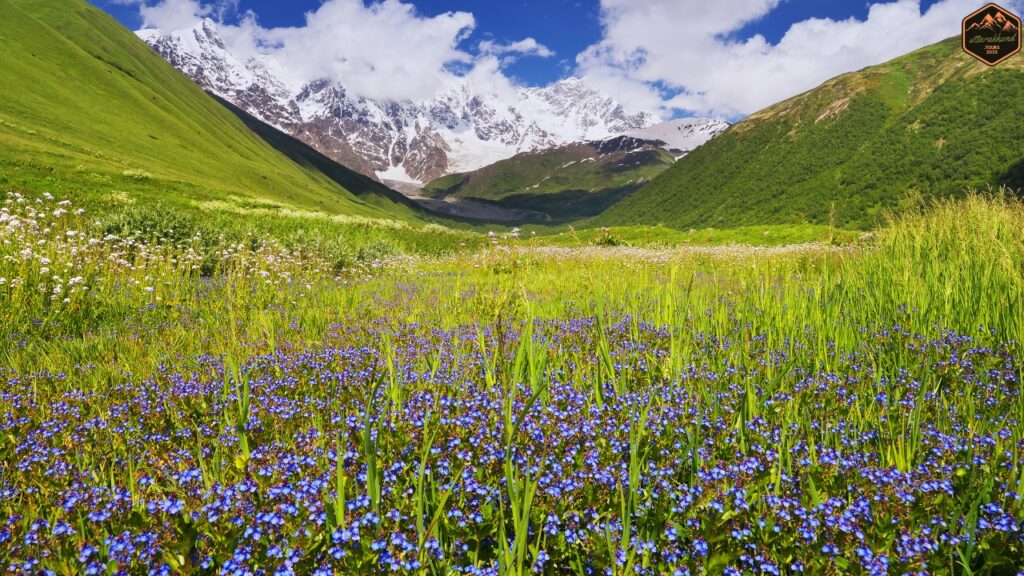
The Valley of Flowers, Uttarakhand, is a magnificent sight wherein nature displays its alluring charm, painting the sights with a plethora of wonderful colors. A UNESCO World Heritage site, it is concealed within the folds of the Himalayas. The valley allured travelers along with nature lovers from far and wide with its vibrant meadows blooming with endemic mountain fauna.
Uncover the flowers that flourish in this hidden haven as you stroll around the splendid backdrop, compelling the valley with sparkling colors. This treasure trove offers gentle breezes and rustling leaves which are bound to leave you awe-struck, and slowly reveal new bestowments with every single step.
This piece guides even the most novice of trekkers, so hiker or leisure walker, everyone is invited to indulge in unrivaled serenity and wonder. This paper aims to help you uncover dozens of secrets behind this stunning geological marvel and provide perspectives and advice to elevate your trip.
So come and experience the Valley of Flowers yourself, as it is bound to refresh your senses with its breathtaking vistas. So the journey to explore this hidden gem of nature starts right here!
The Unique Flora and Fauna of the Valley of Flowers, Uttarakhand
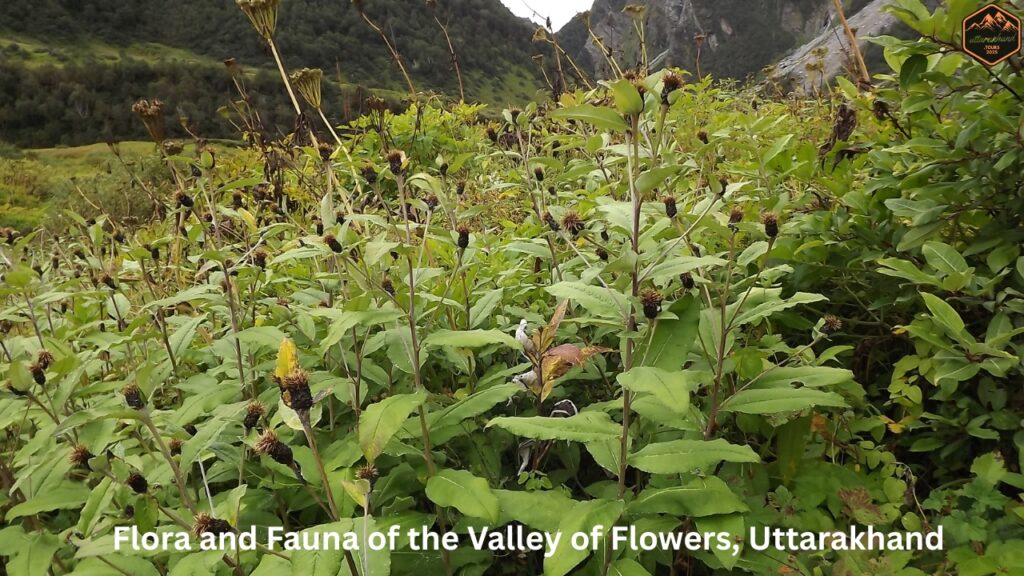
The Valley of Flowers, resting in the foothills of Himalaya, is an abode of flora and fauna diaconically unlike any other. Monsoon season allows shedding of wildflowers such endemic to the valley to bloom. Being home to 600 species of flowers, the valley offers the rarest of the rare to view; orchids, blue poppies, primulas, marigolds, anemones and daisies stand out amongst the rest. These flowers bloom riotously during the monsoon season. The valley’s vibrant pieces of floral artistry serve diatropic purposes with immense ecological value as well.
The biodiversity of the valley encompasses both its flora and fauna, which is an indicator of its rich wildlife. This region is a paradise for nature lovers because it contains habitats of rare species such as the Asiatic black bear, snow leopard, musk deer, red fox, and blue sheep. Amphibians and reptiles like lizards and frogs, along with birdwatching enthusiasts, can also enjoy the spectacle of more than 300 birds, including the eagle and vultures, snow partridge, and monal. These different species living within the valley in an ecosystem that is remarkably delicate, synergistically bring home the message of the need to restore and sustain efforts devoted to conservation.
This breathtaking site Wonderful explains the importance of economic and ecological values also exhibits The higer grade Alpine plants and animals found here are emblematic of the specific physical features. This gives a chance to Emp-recologists and botanists to conduct research due to the unblemished environment of the valley that showcases the balance between human influence and nature. While traversing this extraordinary sight one must safeguard and value the diversity of species that call this secluded wilderness home.
Best Time to Visit the Valley of Flowers
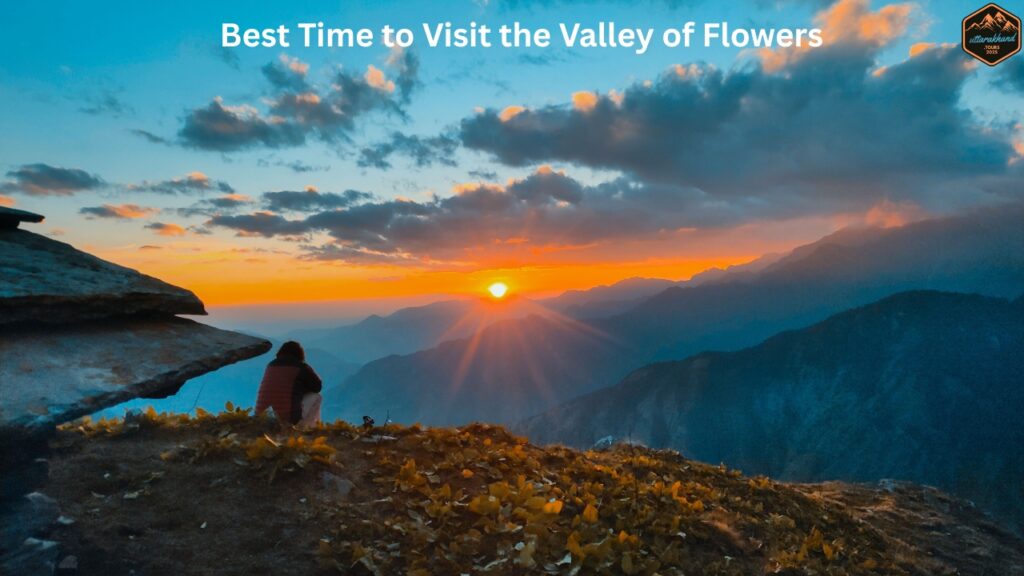
The Valley of Flowers is best appreciated during monsoon season, from July to September, when the flowers are in full bloom. This is the most optimal time to witness the floral spectacle where the meadows change into a colorful carpet. The alpine flora is nurtured by the monsoon rains which makes great surroundings for the flowers to bloom. The downside to all of this is the weather is awfully unpredictable, meaning one should definitely prepare for sudden wet bursts and fluctuating temperatures.
The months of June and October also are valuable for different reasons. June marks the month where the valley “wakes” to warmer temperatures. Seeing as the snow melts and starts revealing patches of green, early tourists get to savor the calm charm of the valley which is accompanied by few tourists.
This makes the period perfect for witnessing the unveiling flowers. While October marks the conclusion of the trekking season as the valley sets itself for the long awaited winter. The mesmerizing golden shades of fall combined with the crisp mountain air around the valley, paints an equally beautiful vision.
When planning the visit, the trekking opportunities and approachable paths should be noted. It is necessary to avoid planning the trip between November and May because the valley is covered in snow and inaccessible during this period. The snowfall makes the valley difficult to reach during the trek, especially during the monsoons, so checking the weather as well as trail visibility prior to setting out is encouraged. With the right planning, the valley can be appreciated as a beautiful, secluded paradise.
How to Reach the Valley of Flowers

The combination of transport modes to reach the Valley of the Flowers is as exciting as the destination itself. The closest airport is Jolly Grant Airport Dehradun, located about 295 kilometers from the base camp in Govindghat, about 27 km from the bus station in Tharamani.
A taxi or bus from the airport will take you to Govindghat, where the trek to the valley begins. Alternatively, you could take the train to Rishikesh or Haridwar which is well connected with most other Indian cities and continues your journey by road to Govindghat.
The overland trip from Haridwar or Rishikesh to Govindghat is very picturesque. It travels through the Garhwal Himalayas which includes specacular views of the mountains, valleys, and rivers. It also passes through most popular hill stations such as Joshimath and Chamoli, facilitating enhanced opportunities for rest and acclimatization.
Road travel during the monsoon season can be particularly problematic so it is good to have a plan prepared to take advantage of daylight. Landslides and blockages along the route can cause delays, so caution is advised.
Upon arrival at Govindghat, you can begin your trek to the Valley of Flowers. The initial step of the trek comprises the 14 km walk around Ghangaria, a quaint little village which is considered to be the base for the foothill of the valley. The pathway leading to Ghangaria is easy to navigate and gives an experience of moderate level trekking.
There are numerous tea stalls and rest places alongside the route. It takes about 3 kilometers of walking from Ghangaria to the Valley of Flowers Gate. The path leading from Ghangaria to the valley is not very challenging and can be completed in a few hours, providing you with stunning views which can be greatly enjoyed in this secret paradise.
Trekking Routes and Difficulty Levels
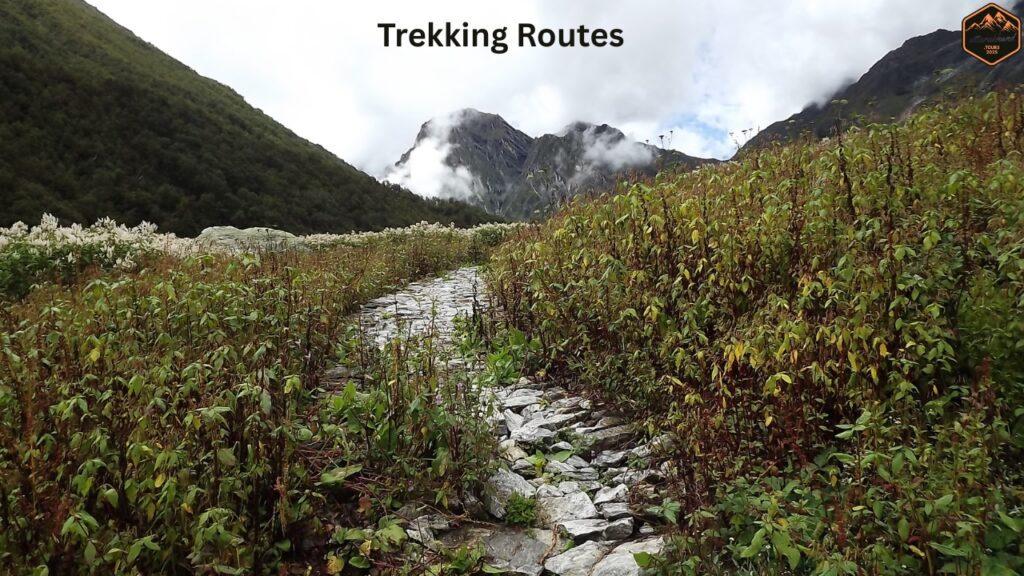
Trekking to the Valley of Flowers is an experience to remember in its own right, but some degree of fitness is required. It is categorized as moderate, making it accessible to both experienced trekkers and eager novices. It starts from Govindghat which is at an elevation of 1828 meters and Ghangaria which is at 3050 meters. The distance from Govindghat to the valley is about 17 kilometer which can be done in 2 days.
The first part of the trek involves climbing from Govindghat to Ghangaria which is 14 kilometers long. It includes beautiful flora and fauna and mercurial waterfalls. There are certain defined trails which are surrounded by certain scenic viewpoints and many resting points which are trekkers favorite.
It can be done with friends as part of groups and the entire stretch can be completed in a single day. Though the path is generally easy with seemingly gentle slopes, the altitude change can be tough for certain people so they are recommended to take their time while drinking water. For individuals who wish to rough it, mules and porters can be rented in the base village of Govindghat.
The last 3 kilometers walk from Ghangaria to the Valley of Flowers is comparatively less strenuous, with an easily passable path. This particular section of the trek is noted for its breathtaking alpine meadows interspersed with wild flowers of various kinds.
The scenic view of the region with gentle slopes and flowers blooming on both sides of the thoroughly paved path is welcoming for trekkers of every age. Walkers however must observe the changing weather and carry the right clothes if they wish to enjoy a hassle-free trek. With the right preparations and consideration of the environment, the journey to the Valley of Flowers becomes truly spellbinding.
Essential Packing List for Your Trip
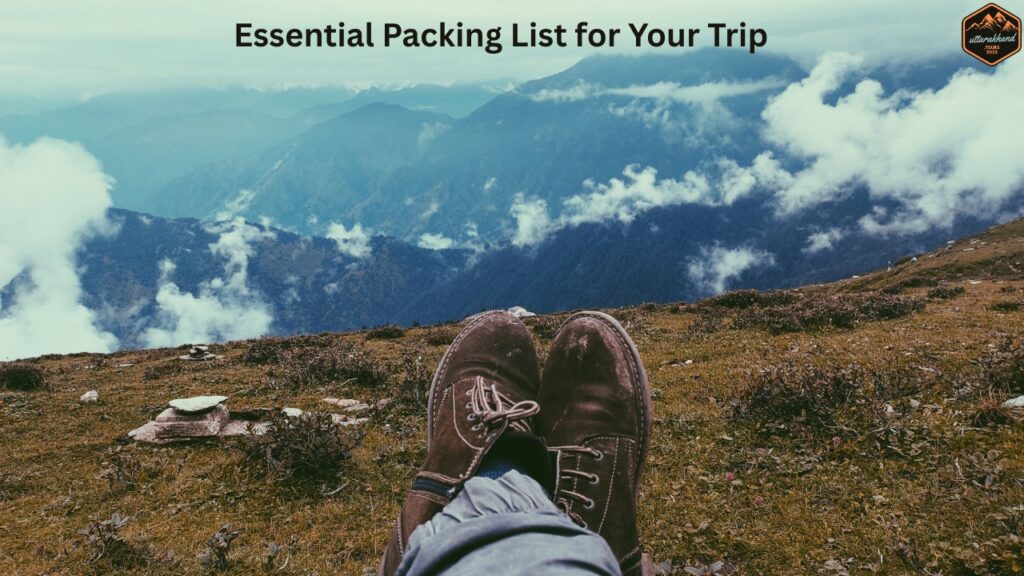
Packing for a trek to the Valley of Flowers has to be done meticulously so that the experience is enjoyable and comfortable. Given how the weather in the Himalayas tends to shift without notice, appropriate clothes and equipment that can withstand various moisture and temperature conditions need to be packed.
To accommodate both daytime and nighttime temperatures along with the associated weather, clothes ought to be layered. Begin with base layers that wick away moisture, and mid layers that insulate, topped by a windproof and waterproof outer shell. Furthermore, do not forget to add cooler evenings warm gloves and socks, plus a winter hat.
Your footwear should be appropriate for the activity as it is vital when it comes to trekking.
Proper walking requires sturdy waterproof trekking boots which should also offer good ankle support to enable the trekking boots to navigate the various changing terrain. To prevent the boots from causing discomfort and blisters during the trek, ensure that they are broken into beforehand. For use at the campsite, sandals or shoes should be lightweight.
A 40-50 liter backpack should be enough to pack all the listed essentials, alongside multiple water bottles or a hydration system to help with hydration, and thus a high-quality deep backpack is recommended.
Other important items include sunscreen with a high SPF rating, UV protective sunglasses, a wide-brimmed hat, and a rain poncho or jacket. For balance on steep or slippery portions of the trail, trekking poles can be useful. A compact first aid kit containing basic medications, blister treatment supplies, and any personal prescriptions is essential.
Toiletries should be packed along with biodegradable soap, a light towel, and trash bags. A camera or phone with extra batteries and memory cards can also help record the stunning beauty of the valley of flowers.
Tips for Responsible Tourism in the Valley

As tourists visiting the Valley of Flowers, it is on us to make sure that this area’s ecosystem isn’t harmed through our actions. Through responsible tourism practices, we can help conserve the valley’s beauty for posterity. One of the most prominent rules of responsible tourism is to leave no trace.
This refers to carrying all waste out with you, even bio-degradable waste, and deposited in waste bins provided for that purpose. Instead of single-use plastic containers, use refillable ones and water bottles.
Responsible tourism also encompasses respecting the local wildlife and plant life. To this end, the use of marked paths should be adhered to in order to reduce impact on the vegetation and refrain from harvesting or stepping on the flowers. Animals should only be viewed from afar so that their behavioral patterns are not interrupted.
Attempting to feed or get too close to animals does compromise their wellbeing. Moreover, refrain from shouting and playing music or make loud sounds, as this interferes with the calm atmosphere of the valley and its wildlife.
Assisting local businesses and supporting their initiatives is a fundamental aspect of responsible tourism. Rather than using guide services offered by agencies, interact with local guides, porters, and their families. Also, use locally-owned guesthouses, lodges, and restaurants. This has economic effects on the local business community, and at the same time you get to experience the area’s culture at a personal level.
Moreover, make sure to observe the customs and practices in regard to local people and interact in a way that is respectful and considerate. Following these responsible tourism practices will allow you to appreciate the Valley of Flowers under lesser-used routes and ways, thus aiding in preserving the flora while promoting responsible tourism practices that support the ecosystem and community.
Nearby Attractions and Activities
Hemkund Sahib :-
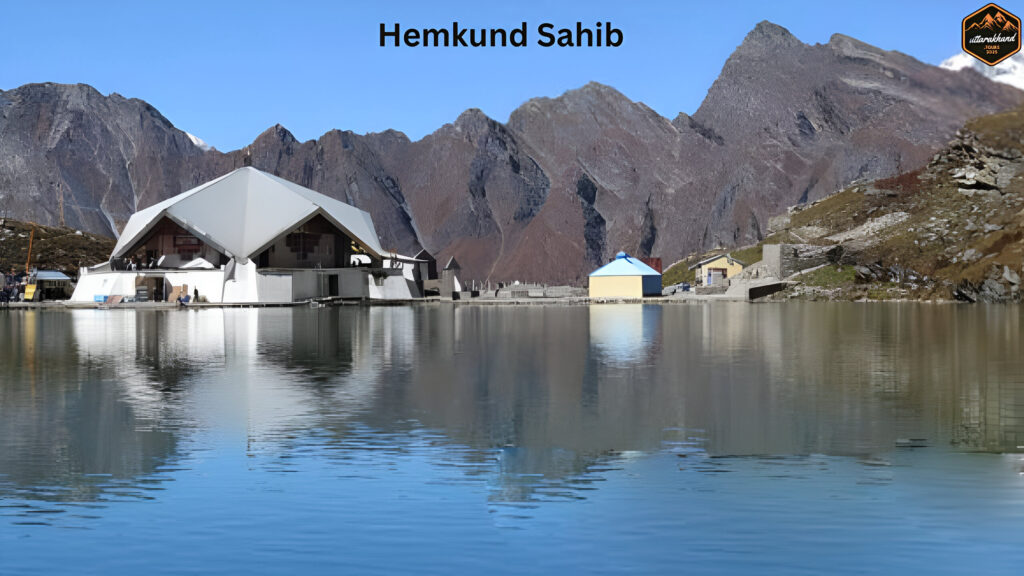
Nandadevi biosphere reserve is home to the stunning and serene valley of flowers , a place of interest for enthusiasts. It also supports the most famous and ethnically diverse treks in India – the hemkund Sahib trek which is located at an altitude of 4632 m. A steep and rocky 6 km long climb from Ghangaria, which passes through waterfalls and alpine meadows, leads to a star shaped glacial lake which is encircled by 7 snow capped peaks and is the most beautiful piece of nature.
Chamoli district is well-known for its Gurudwaras which are built using a white marble and kirtans can be always heard echoing within. Botanist from all over india come here during the period of July to August because during this time the edges of the lake blossom with the spectacular Brahma Kamal flowers. This is India’s renowned trekking destination. Fellows need to carry warm layers and it is preferable to reach by twelve if one wishes to escape mid-afternoon fog.
Click Here for More Details about Hemkund Sahib
Nanda Devi National Park: –
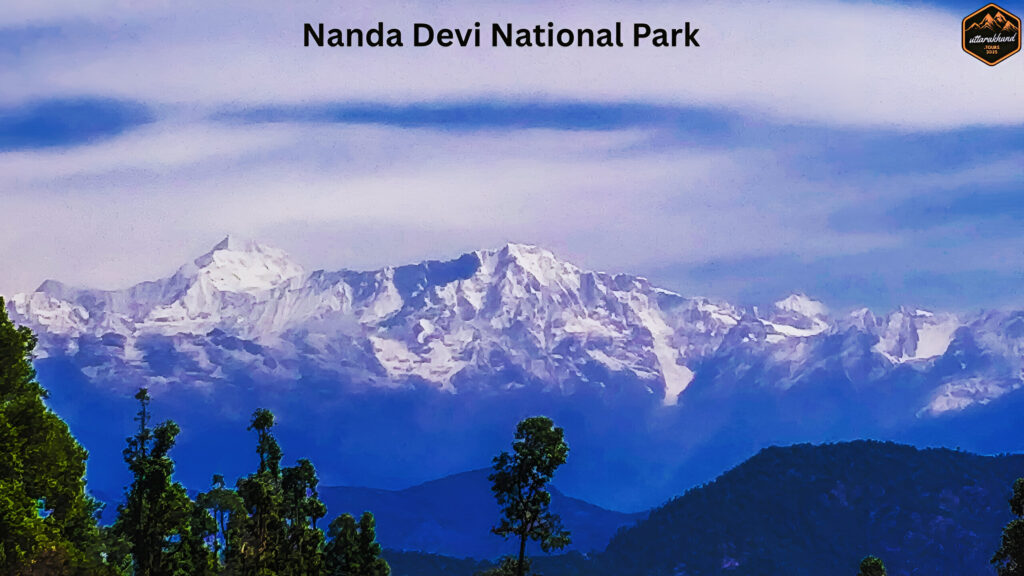
Nature lovers can enjoy trekking in Nanda Devi National Park, which has 20 km long Dharansi Pass. It overlooks Nanda Devi Peak, which stands at 7816 meters and is the second highest peak in India. The park is filled with Himalayan Musk Deer, blue sheep and the rare Snow Leopard. It is fed by glaciers, and the streams and slopes filled with wildflowers makes it a center of nature-photography in India.
Trekkers must acquire permits from the forest office in Joshimath, with May to September being the most convenient months to trek as the trails are more accessible. Remember to take along good hiking shoes because of the terrain, and to hire local guides in case of difficulties. This place is an adventure activities haven in the Himalayas.
Joshimath: –
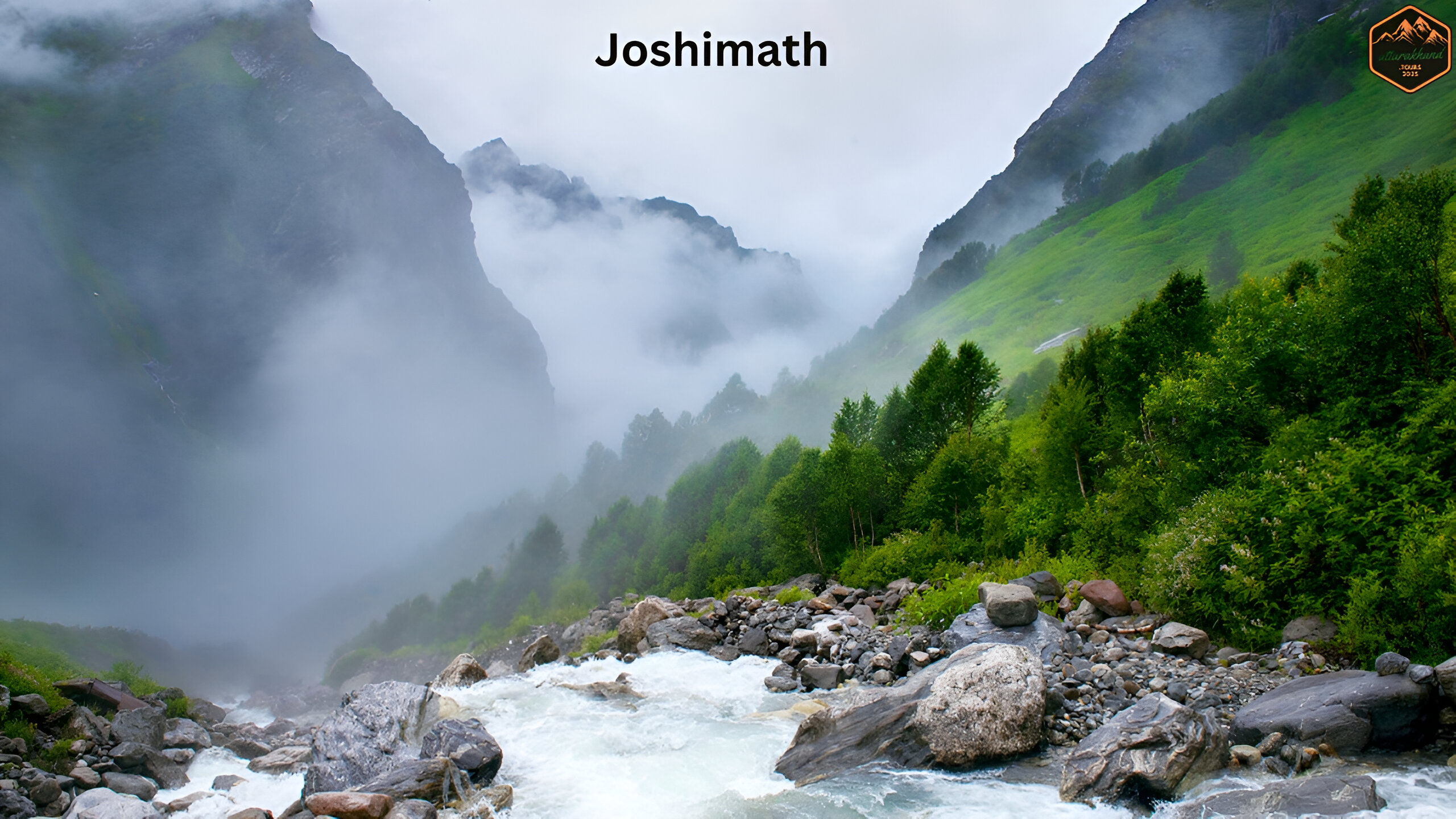
The cultural traveler will find interest in Joshimath tourism in the small town which lies south of the Valley of Flower trek base. Tour the 8th century AD Shankaracharya Math, the Narsingh Temple which is very popular during winter with Garhwali dances and folk performances.
The bustling market on Auli Road in Joshimath is famous for shawls, rajma, and Garhwali thali, which can be found in Kesar Restaurant and other stalls around the town. These Joshimath attractions reveal Garhwali culture through tamra handicraft work and folklore related to the great Indian mountain ranges. Visiting the Valley of Flowers nearby attractions integrates trekking in the great Indian Himalayas with rich cultural experience.
Local Culture and Traditions
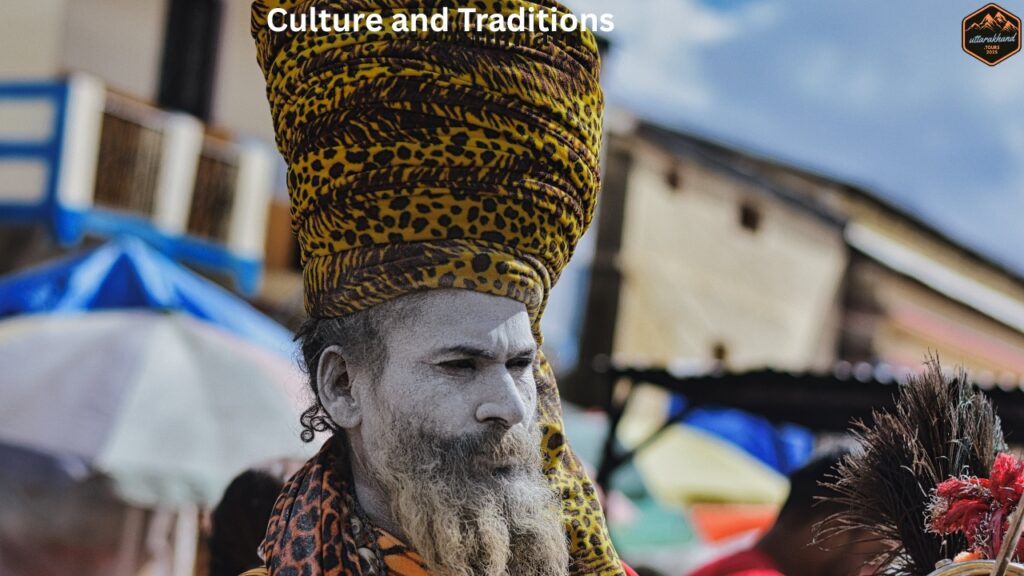
Inhabitants of the valley of flowers known as Garhwali people are famous for their rich culture, tradition and food. The environment of Garhwali region is filled with mountains, rivers, and forests which is respected and revered by the local society. Also, Garhwali folklore, prcatices and customs greatly reflect their relationship with Nature.
Furthermore, Garhwali people express their respect for the nature and celebrate their bond by indulging in many different customs. One of the most and perhaps the most important in the area is Nanda Devi Raj Jat Yatra which is celebrated every twelve years as an homage to goddess Nanda Devi. This celebration epitomizes devotion of the circumambulation to the goddess carved from nature.
The local perk of the cultural touch is the Garhwali delights. This cuisine is different from others as it’s prepared from local items. These includes chainsoo (black gram curry),spiced potatoes also known as aloo ke gutke, and phanu which is lentil based. Garhwali people are welcoming and their kind approaches makes eating these meal at local restaurants and homestays a heavenly experience.
The Garhwali culture comprises a variety of arts and crafts which include traditional handlooms and crafts. Locally available wool is meticulously transformed into garments like shawls and sweaters, as well as carpets, through age-old techniques. Artisan’s creativity is also reflected in the popular handicrafts of wooden and stone sculpture as well as metal works.
Tourists are provided with an opportunity to participate in the economic development of the local people by purchasing these items from the local craft shops and markets. Knowing the culture and other traditions widens the scope of visiting the Valley of Flowers.
Conclusion: Embracing Nature’s Beauty in the Valley of Flowers
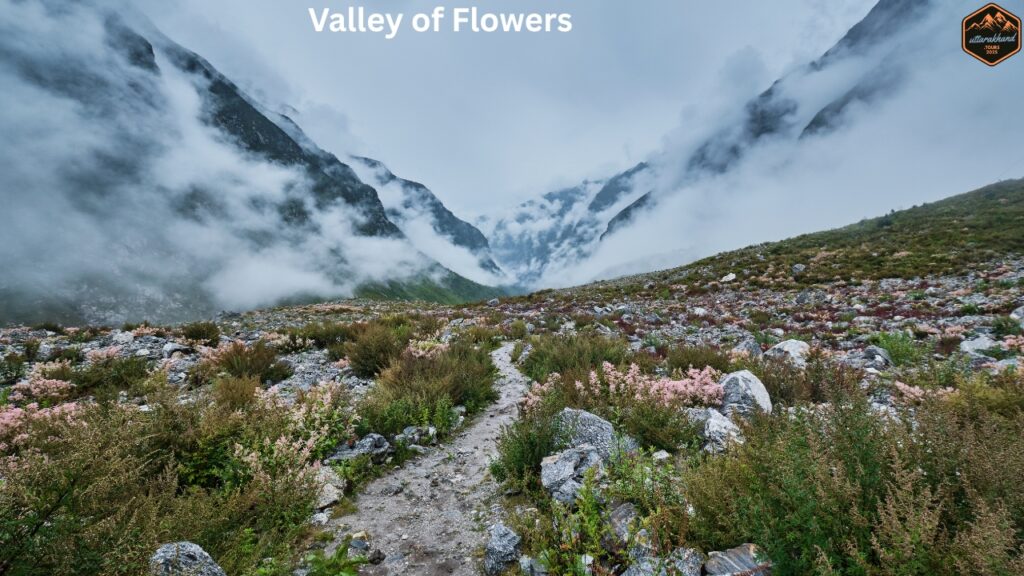
The Valley of Flowers Napal is one of the most breathtaking spectacles on nature. It exhibits the beauty nature enfolded along its splendor. The valley is eloborately nourished by rich biodiversity, appealing danamic landscapes along with rich culture, making it awe-inspiring and unforgettable to every visitor. The place accommodates wonders along with flower bedecked meadows and crisp cool air allowing enjoyment to trekkers, calm seekers and nature lovers while allowing peace and rejuvination.
Sustainable tourism along with supporting and responsible engagement with the culture can aid in protecting the central valley treasures of the valley. Looking after the valley by allowing preservance of delicate ecosystem would allow enjoyment for several generations. The valley of flowers serves as a paragone and implores the need to guard treasures of Nature and unlock the delicate ecosystem. Conserving the valley treasures along with flowers will serve as a beautiful destination awaiting further exploration.
While descending from the Valley of Flowers, one carries along as a memory the picturesque sceneries and the blossoming flowers. However, also keep in mind the joy of having witnessed the true wonders of nature. The beauty of this valley filled with calmness and surrealism should intend one to look after the many natural gifts our planet has in store, and to take steps to conserve them. This journey marks a step into a new life which requires the exploration of nature’s secret organizers which serve as a pure paradise , inspiring humanity to remember the life changing bond we have with nature.
FAQs for Valley of Flowers, Uttarakhand
Which month is best for the Valley of Flowers?
Mid-June to early September during which time Valley of Flowers flowers and July–August to witness wildflowers like the Brahma Kamal. The monsoon rains bring added lushness to the valley, but clear skies in early June or in late August provide better opportunities for nature photography. Stay away in Winter (Oct-May) Snow on trails.
How can I travel to Valley of Flowers?
Take off from Joshimath, a major Joshimath tourism centre, 298 kms from Dehradun’s Jolly Grant Air port. Take a shared taxi or bus to Govindghat (22 km), then trek 13 km to Ghangaria, the starting point for the Valley of Flowers trek. The last stretch (3–5 km) of trail to the valley needs a permit from the forest checkpost. Joshimath to Jumma takes maximum of 8–10 hours total to reach your trek point.
Is the Valley of Flowers trek good for beginners?
The Valley of Flowers trek is of Moderate difficulty, requiring 16–18 km return trek from Ghangaria & 1,200 m altitude gain. Physically fit beginners can handle it, though some experience trekking (especially at high elevation) is beneficial. Rent a local guide and bring trekking poles as the going will be rocky. Get acclimatize at Joshimath to reduce height fear.
What is the Hemkund Sahib Yatra trek like?
Ghangaria and Hemkund Sahib Pilgrimage Trek A hard climb of 6 kms to 4,632 meters. The path, flanked by waterfalls and alpine meadows, ends at a glacial lake and the Hemkund Sahib Gurudwara. Plan on 5–7 hours uphill; leave by 6 a.m. or you’ll get fog. You’ll need warm layers and boots.
Is it possible to visit Nanda Devi National Park from the Valley of Flowers?
Yes, Nanda Devi National Park, a UNESCO World Heritage site, can be reached from Joshimath. The 20-km Dharansi Pass trek provides views of Nanda Devi Peak (7,816 meters) and wildlife such as Himalayan musk deer. Permits are needed from Joshimath’s forest office, and May to September is the best time to go trekking in Nanda Devi National Park.
What are the places to visit in Joshimath?
Attractions in Joshimath 10th-century Adi Shankaracharya Math, with a meditation cave, and Narsingh Temple, home to a wrestling match-ritual during the annual Badri- Kedar Festival are popular among tourists. Wholesale for woolen shawls and Garhwali thali at the market on Auli Road to get a sense of local customs (try the rajma at Kesar Restaurant).
What to Pack for Valley of Flowers?
Pack for a Himalayan trek with the following:
Sturdy, waterproof trekking boots and poles.
High-altitude warm layers (fleece, shell)
Rain gear (monsoon season).
Reusable water bottles and high energy snacks.
Camera for best places for wildlife photography in india.
Permit copy and ID for entry.
Any green travel tips for the Valley of Flowers?
Part of the eco-travel India does to leave behind snow leopards, birds, butterflies, and Himalayan wildflowers of the India ecosystem is to choose biodegradable toiletries, avoid the plastic and stick to the marked trails you are on. Support local wildlife conservation groups, such as the Uttarakhand Forest Department. Be respectful of wildlife and stay 50 meters from animals in Nanda Devi National Park for responsible travel.
Which all animals and plants can be seen in Valley of Flowers?
In July–August, the Valley of Flowers is ablaze with more than 500 wildflower species such as the Brahma Kamal and blue poppy. In Nanda Devi National Park, look out for bharal, musk deer, and the elusive snow leopards. You should really get a pair of binoculars and a book if you do wildlife photography.
Are there any facilities of stay near the Valley of Flowers?
For those doing the Valley of Flowers trek, Ghangaria has basic guesthouses and campsites, from ₹500 to ₹2,000 per night (book ahead for July–August). Joshimath accommodation, For more lodging in Joshimath there are hotels such as Hotel Dronagiri (₹2,000 – ₹5,000) for Joshimath tourism. Stays are prohibited inside the valley in order to protect its ecosystem.

Upgrade your celebration with professionally styled balloons in Dubai
helium balloon [url=https://balloons-and-helium.com]https://balloons-and-helium.com[/url] .
You’ve managed to create something both thought-provoking and deeply comforting — not an easy feat.